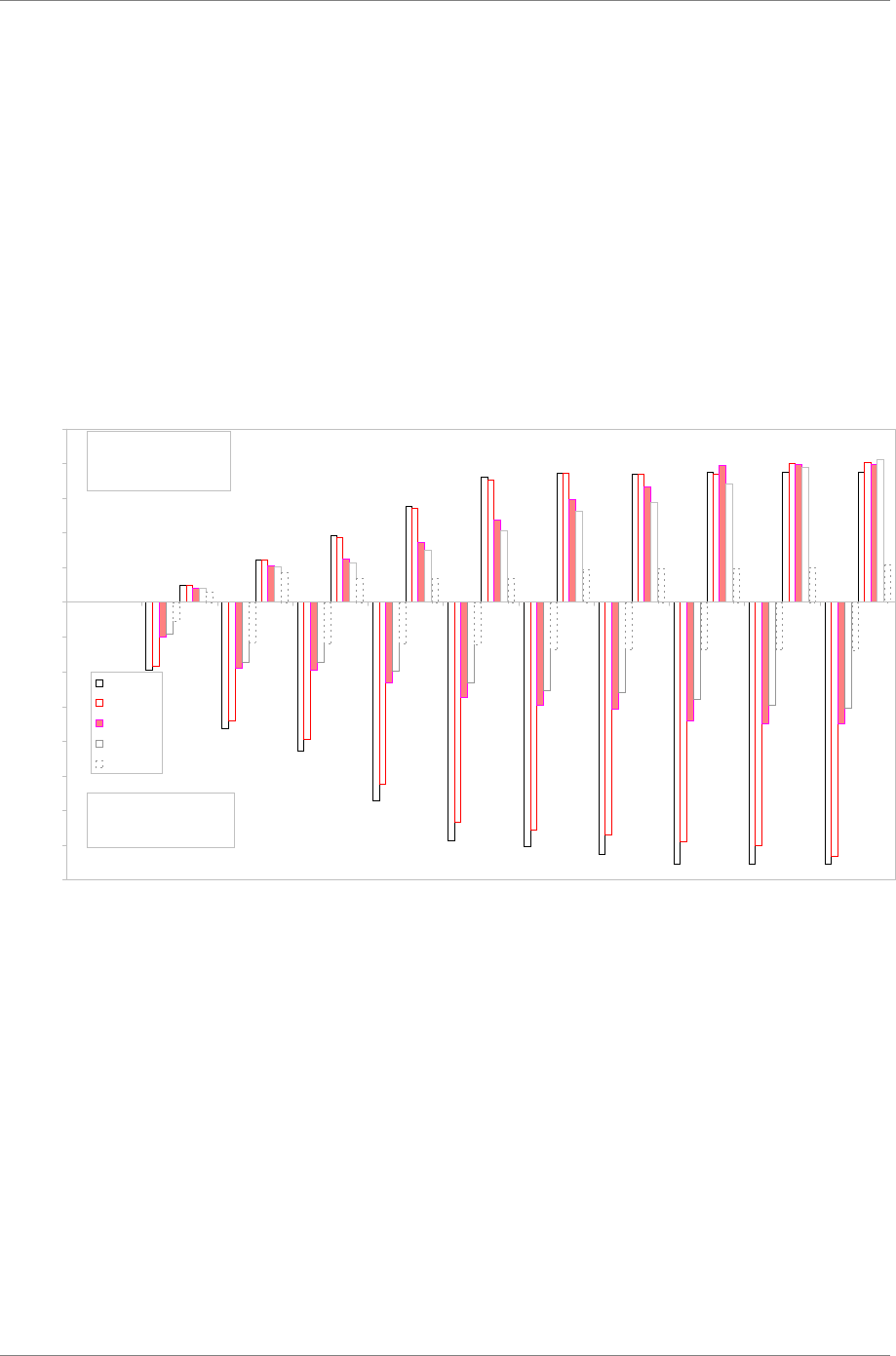
dCS 974 User Manual Manual for Software Version 1.0x
dCS Ltd May 2001
Manual part no: DOC1241121A1
Page 108
Document No: OS-MA-A0124-112.1A1
Contact
dCS
on + 44 1799 531 999 email to: more@dcsltd.co.uk
(inside the UK replace + 44 with 0) web site: www.dcsltd.co.uk
When is Dither Needed?
Dither (on its own or with noise shaping) is not always needed. The condition
for not being needed depends on the level of noise in the incoming signal, the
amount of noise shaping being used, and the output word length. The user may
want to avoid having to think about this at all – in which case, use Noise
Shaped Triangular dither – or may wish to minimise noise and added noise.
As a rule of thumb, if the following condition is met, dither is not necessary:
Noise in input
signal
+
Noise gain of
noise shaper
>
Q noise of wanted
output word length
The noise gain of the noise shaper is the same as the unweighted noise power
given in Table 16, and is shown in Figure 50 below.
Noise Gain and Weighted Noise Gain vs Shaper Order
dCS 972 SW v1.54
-48
-42
-36
-30
-24
-18
-12
-6
0
6
12
18
24
30
012345678910
Noise Shaper Order
Noise Power (dB rel no shaping)
96 kS/s
88.2 kS/s
48 kS/s
44.1 kS/s
32 kS/s
Actual Increased Noise
Power and Noise Gain
(top section)
Perceived (F Weighted)
Noise Power (bottom
section)
Figure 50 – Noise Gain and Weighted Noise Gain by Shaper Order and Sample Rate
As an example of reading this, consider a 24 bit signal in with a –110 dB0 noise
floor, to be output at 48 kS/s 16 bits. The Q noise in the output signal would be
-98 dB0, so if a noise shaper with more 12 dB of noise gain was used, no dither
would be necessary. Looking at the chart, a 5
th
order shaper (14.2 dB of noise
gain) would avoid the need for dither, whereas a 4
th
order one (10.9 dB of noise
gain) would need dither. The 5
th
order shaper would give a weighted noise
improvement of 16.4 dB, whereas the 4
th
would only give 13.9 dB perceived
improvement, less a further degradation from adding dither.


















